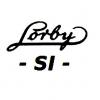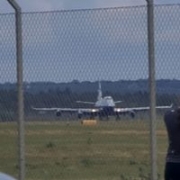
-
Content Count
5,795 -
Donations
$0.00 -
Joined
-
Last visited
Community Reputation
2,036 ExcellentAbout Lorby_SI
-
Rank
Developer
Contact Methods
-
Website URL
http://www.lorby-si.com
Profile Information
-
Gender
Male
Flight Sim Profile
-
Commercial Member
No
-
Online Flight Organization Membership
none
-
Virtual Airlines
No
Recent Profile Visitors
The recent visitors block is disabled and is not being shown to other users.
-
No idea, sorry. In general, Desktop and Web FIPs will be similar but not identical.
-

AAO Gauge Layout Editor Tutorial for Beginners
Lorby_SI replied to huha001's topic in AxisAndOhs Support
In the AAO menu, "Gauges->Desktop FIPs->Editor (button is in the lower part of the dialog)". The Gauge Editor is a "live" feature. It shows all moving parts of your gauge right as you create them. It needs the gauge "infrastructure" in the background to be able to do this, hence the necessity for the Desktop FIP handler to be active. On the editor there is a "?" button at the top that opens the gauge manual. -

Throttle axis setting with AAO and AzurPoly Bronco
Lorby_SI replied to kevinfirth's topic in AxisAndOhs Support
For me it goes from idle to full power and back. If you don't believe me, check the behavior code. This IE/BVar is what is being actuated when you use the mouse on the thrust levers. I haven't tested any further, but as mentioned above, you probably will have to use another IE to toggle between normal and reverse range. It was in the same list, most likely to be assigned to a button. Sounds to me like you have reverse mode active? -

Throttle axis setting with AAO and AzurPoly Bronco
Lorby_SI replied to kevinfirth's topic in AxisAndOhs Support
I just bought the plane. The LVar does nothing for me. Throttles (and some other things) in the Bronco are controlled by MSFS Input Events: 1. Open the "Add Axis" dialog with the green "+" 2. Click into the "Select Event" box 3. Go to the group "MSFS Input Events" 4. Select "ENGINE_Throttle_1" and doubleclick it 5. Set Axis Min to 0 and Axis Max to 100 6. Set "Rounding" to "Int" 7. Move your throttle lever on the joystick 8. Save Alternatively you can use IEs as BVars too, both options seem to be largely identical (B:ENGINE_Throttle_1_Set) There is another IE/BVar for toggling the reversers, setting a negative range for the IE doesn't seem to work. -

Throttle axis setting with AAO and AzurPoly Bronco
Lorby_SI replied to kevinfirth's topic in AxisAndOhs Support
Are you quite certain that changing the value of this LVar is actually moving the throttle lever? It could be read-only or just used for the animation? Is the axis range correct? With LVars, Axis Min and Axis Max are rarely in the default +/- 16K range. Observe the variable first, to find out about the range, then set min and max accordingly. MSFS generally prefers Events (second box from the top) over the Axis variables from the first box. The main flight control events have been duplicated in the very fist group of the events treelist named "!! Flight Control Axis". Did you try THROTTLE1_AXIS_SET_EX1 and THROTTLE2_AXIS_SET_EX1? Those work for me in the Azurepoly Transall, maybe they are related. -

Beech Model 18 (Oil Shutters event problem)
Lorby_SI replied to riveter's topic in AxisAndOhs Support
Oh, on the StreamDeck. Right. If the toggle gets out of sync, then your read variable is either wrong, or you are checking for the wrong value. The "problem" with the toggle is, that it uses the "native" two images from the StreamDeck software. Every time you click on the button the image changes, regardless of the read variable. If then the read variable is not 100% correct, your button will show the wrong state. Solution: make sure to use the correct variable and the correct value for "ON" (in the example above that would probably be 100, not 1). If that is not possible, use a different StreamDeck Action (MultiGauge or SliderGauge). -

Beech Model 18 (Oil Shutters event problem)
Lorby_SI replied to riveter's topic in AxisAndOhs Support
What is an "AAO Toggle Button"? I'm not sure about what you mean. I'm not aware of any use case called "Toggle Button" in the AAO app. -

Beech Model 18 (Oil Shutters event problem)
Lorby_SI replied to riveter's topic in AxisAndOhs Support
As I wrote above, my script assumes that the LVar goes between 0 and 1. But it doesn't, the range is 0 to 100. So you do the same thing as in your other scripts, use an if{ (L:Denarq_OILSHUTTER_SET_1, Number) 0 == if{ 100 (>L:Denarq_OILSHUTTER_SET_1, Number) } els{ 0 (>L:Denarq_OILSHUTTER_SET_1, Number) } -

Beech Model 18 (Oil Shutters event problem)
Lorby_SI replied to riveter's topic in AxisAndOhs Support
Yes, looks like the thing goes from 0 to 100. Just make sure that it is actually operating the oil shutter too. It can happen that the LVar is just moving the lever through its animation. In this case you should be fine though. And you can operate this with an axis too btw. Just type "L:Denarq_OILSHUTTER_SET_1, Number" into the "Enter Variable" box on the Axis dialog and set Axis Min to 0 and Axis Max to 100 -

Beech Model 18 (Oil Shutters event problem)
Lorby_SI replied to riveter's topic in AxisAndOhs Support
Cowl Flaps (L:CARVAR_cowlflap_L, Number) 0 == if{ 16384 (>K:COWLFLAP1_SET) } els{ 0 (>K:COWLFLAP1_SET) } (L:CARVAR_cowlflap_R, Number) 0 == if{ 16384 (>K:COWLFLAP2_SET) } els{ 0 (>K:COWLFLAP2_SET) } Manifold Heat (A:GENERAL ENG ANTI ICE POSITION:1, percent) 0 == if{ 16384 (>K:ANTI_ICE_GRADUAL_SET_ENG1) } els{ 0 (>K:ANTI_ICE_GRADUAL_SET_ENG1) } (A:GENERAL ENG ANTI ICE POSITION:2, percent) 0 == if{ 16384 (>K:ANTI_ICE_GRADUAL_SET_ENG2) } els{ 0 (>K:ANTI_ICE_GRADUAL_SET_ENG2) } Be mindful of the correct application of space characters in AAO RPN code. They are VERY important. -

Beech Model 18 (Oil Shutters event problem)
Lorby_SI replied to riveter's topic in AxisAndOhs Support
LVars are not events. They are just variables. Changing their values may accidentally work - or not. They can be observed as the Variables that they are, but only if you know their names first. So you need to collect all LVars from the sim first (AAO Scripting menu) then you can observe their values (also in the Scripting menu). Be mindful that an LVar can have any value, not just 0 and 1. Are you quite certain that there are no Input Events or BVars associated with the switches/levers? Those scripts seem very complicated. (And they are syntactically incorrect in places, there are space characters missing) In general, when you want to change the value of an LVar in the sim, you must supply a unit, at the very least the default "Number" (otherwise AAO treats it as an internal variable that is never sent to the sim - see AAO manual) Assuming that this LVar has only the values 0 and 1 (observe it to make sure) then the scripts would be "On" 1 (>L:Denarq_OILSHUTTER_SET_1, Number) "Off" 0 (>L:Denarq_OILSHUTTER_SET_1, Number) "Toggle" (L:Denarq_OILSHUTTER_SET_1, Number) ! (>L:Denarq_OILSHUTTER_SET_1, Number) In general please consider this (I just wrote it in another thread, so I'm just quoting myself real quick) -
Nothing special in that logfile. My best guess is that a keyboard input gets stuck internally. Maybe one of them is not being released, and AAO thinks that it is supposed to process the combo. Anything to see on the main dialog, does one of the green LEDs stay lit, although the key is not being pressed anymore?
-
What does that look like? Are you flying in MSFS Beta or the normal production version? Check if the button operates the MSFS default: an Input Event. If the aircraft developer chose to implement them, then you will find them in the normal Event treelist in the group "MSFS Input Events". The BKSQ TBM850 has a few of those. If there is no Input Event, then, if you want to investigate a button or lever, use the MSFS Developer Mode -> Tools -> Behaviors. Once this dialog is open, click back into the sim, then hover the mouse cursor over the control that you are interested in and press Ctrl - G. In most cases the behavior code of that switch or lever now shows up in the dialog. First, investigate the Mouse interaction code in the components called Asobo_GT_Interaction_LeftSingle... (or Wheel, etc.). This contains the code that is executed when you perform the associated mouse action. And that is what you want to replicate in AAO. On said dialog there is also a tab that contains all LocalVariables (=LVars). Just be mindful that LVars are not events of any kind and that, generally speaking, they don't actually do anything. That changing an LVar can potentially trigger something in the cockpit is in most cases pure coincidence. There is even the possibility that changing the LVar will move the switch - but will not trigger the actual aircraft system that the switch operates (= when the LVar is only used for the switch animation, nothing else) What button are you looking for exactly?
-
Is this about keyboard keys going into AAO or virtual keys that are being sent to the sim? Any clues in the AAO logfiles? AppData/local/LORBY_SI/...
-
Try deleting the folder(s) that Windows created for the app: C:\Users\...\AppData\Local\LWR\LorbyAxisAndOhs_* "Sometimes something" happens to those files. But normally I would expect an error message when you start AAO, because this affects the database too.






